Ireland has long been the home to hallmark names when it comes to fashion. Celia Holman Lee, Orla Kiely, Shelly Corkery, Paul Costello, Phillip Treacy. The list is endless. However, a new wave of designers is now coming out of Ireland. They are not only setting the agenda when it comes to trend, but they are also combating some problems the industry faces, such as fast fashion and the need to be more eco-friendly and sustainable. This article features four women to watch in 2020 when it comes to doing style in a more conscious fashion.
Aoife McNamara aims to become 100 per cent sustainable
Aoife McNamara, a 23-year-old designer from Limerick, spoke about her bold new collection for summer 2020, for which she collaborated with an Irish woollen mill. This is just one of two collections she will be launching next year.
McNamara teamed up with John Hanley Woolen Mills in Co Tipperary for her woollen summer collection which will be showcased in January in the RDS. This collection tries to marry different fabrics such as wool and velvet to create unique pieces. Her other collection is still being completed.
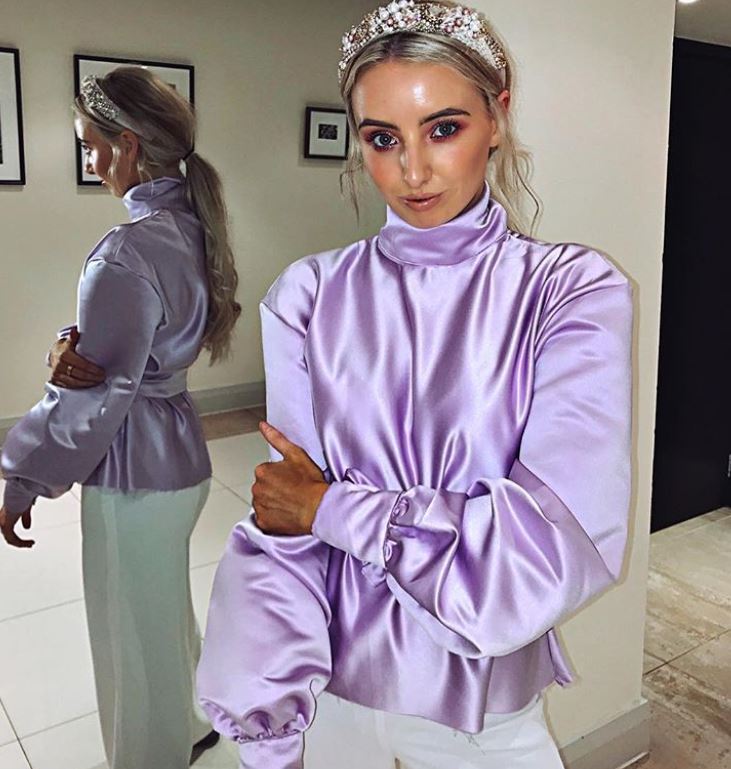
“I was really inspired by Ireland. Using Irish materials is really where my inspiration came from and I knew that’s what I wanted to have in my collections”, says McNamara about her 2020 creations.
Inspiration for her pieces not only came from Ireland, but also from Paris. This city’s architecture influenced the shapes McNamara created in her designs.
“I feel like all these people who buy these fast fashion brands, they don’t understand the damage that they’re doing”
Aoife McNamara
Sustainable and environmentally friendly designs are important for the young designer. For this year, McNamara made her spring/summer collection 50 per cent eco-friendly with specific materials. However, she wants to grow that percentage in 2020.
“I want to get into more sustainable materials. I want to tap into recyclable materials”, she says and envisions her brand, AOIFE Ireland, to be made from 100 per cent sustainable materials soon. One of McNamara’s favourite aspects of her career is educating people through her clothes.
“I feel like all these people who buy these fast fashion brands, they don’t understand the damage that they’re doing”, says McNamara.
McNamara was always interested in art but it was when she went to the Limerick School of Art and Design graduate show that she became mesmerised with how people created the clothes.
She then studied at Limerick School of Art and Design for four years. Through this, she did an internship in her third year with Marc Jacobs in New York for five months. After graduating last year, she travelled to Paris with her own money and got a job with the PR company Rainbowwave during Fashion Week.
“It was more of the business side of fashion that I learned from them”, says McNamara, adding that more emphasis needs to be put on this aspect of the industry for students studying fashion in college.
After Rainbowwave, she worked in a showroom and after that she needed to find a job. McNamara was in the French capital, unable to speak the language and only had accommodation for the first month. After doing a quick run around Paris with her CVs she worked with various design houses there and stayed in the city for five months before returning back to Ireland. When she returned in February of this year, she launched her label, AOIFE Ireland.
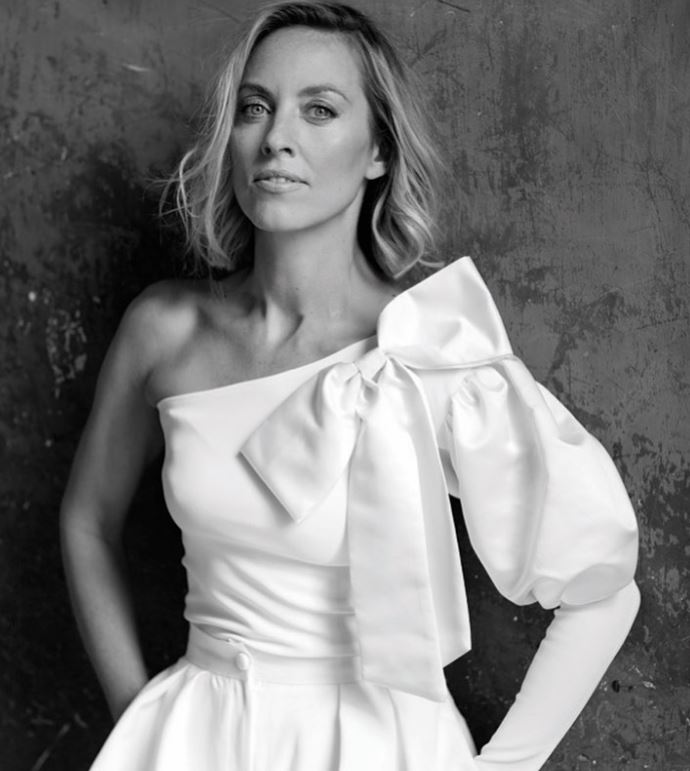
During the Summer she also went over to San Francisco to receive business mentorship from Steve Walker. Despite travelling to learn more for her work McNamara says she has no plans to leave Ireland with her label anytime soon, which other designers have done.
“I just don’t think we’re educated on setting up a business”, says McNamara on why other colleagues may have left the country to expand their label. McNamara says it’s unfortunate that so many young designers leave Ireland, especially when there’s such a market for them here.
McNamara initially started the business with her own money, but then secured funding from the Local Enterprise Office. Although investors had contacted her at the start, she was hesitant to get other people involved. She is not ruling out accepting other outside funding next year though.
Her collections will not be the only thing occupying McNamara as she is going to be starting a course in Saint Martins next year, where she hopes to learn more about sustainable design.
McNamara utilises her social media presence to build up her reputation here in Ireland. Often she posts photos of herself wearing her own creations or of influencers and personalities, such as Kathryn Thomas, also wearing her designs. She currently has over 18,000 Instagram followers.
McNamara says that she entered into two other collaborations for next year, but wishes not to comment any further for now.
Helen Hayes has people marvelling over her bags in Brown Thomas
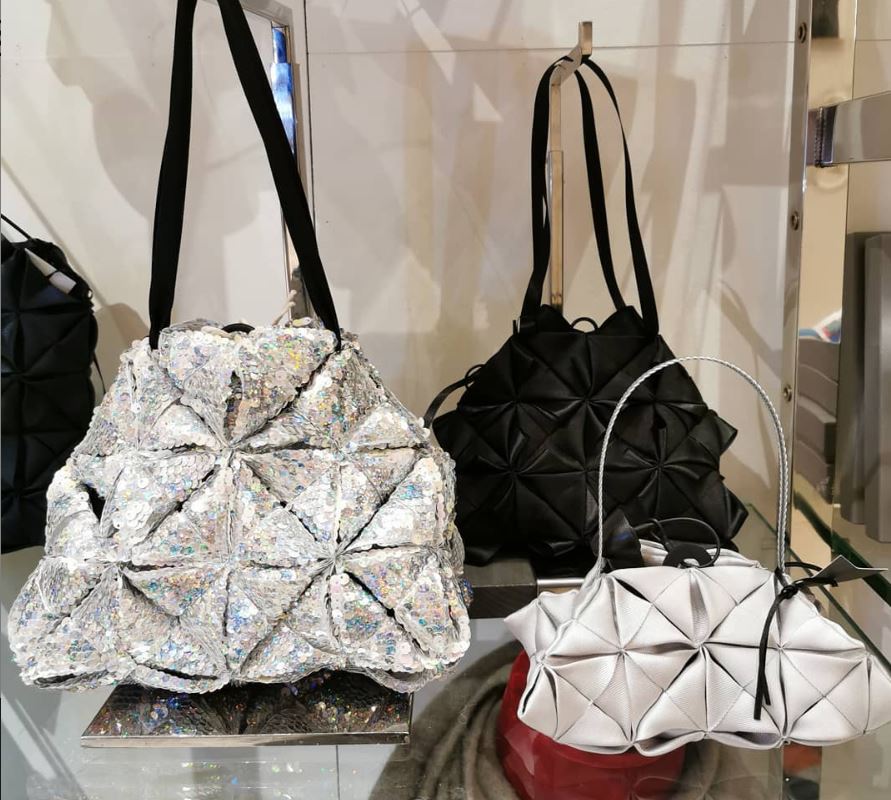
Tipperary-born couture designer Helen Hayes entered the fashion industry later in life than some of her colleagues. Despite this, her success continues to grow.
Her recent selection of small bags, which she designed using a unique folding technique, is on display in the Brown Thomas Marvel Room until December 23.
“I’m at the early stages of my new collection, so I’m just mulling things over and just working out where to take it next”, says Hayes, giving little away when talking about her new collection to be launched in spring 2020.
“If you asked me last year what I’d be able to do this year, I never thought I’d get into CREATE or the Marvel Room, so it’s still baby steps. I don’t want to over-expand and let it get out of control”, she adds.
Her bags that are currently in the Marvel Room are a progression of the work she did while participating in the CREATE initiative by Brown Thomas, which showcases Irish designers, earlier this year. Before becoming involved in CREATE, Hayes was producing pieces with private commission.
“If you spend 50 or 60 hours making a skirt, you can’t charge high street prices for it.”
Helen Hayes
Another Irish designer, Sara O’Neill, who is behind the brand Éadach (meaning cloth in Irish) also features in the Marvel Room this Christmas. Her designs are inspired by women in Irish mythology and folklore. These include The Morrigan (known as The Phantom Queen associated with fate and death) and the Pirate Queen Gráinne Mhaol.
“I don’t necessarily start from scratch. One thing evolves into the next”, says Hayes.
Although she is relatively new to the fashion business, Hayes has a creative background, having originally studied graphic design in the Limerick School of Art and Design. Hayes then moved to Dublin and worked for a number of years in a graphic design studio. However, she decided to change her career path in the mid-noughties.
“When my daughter started national school, I started at night in the Grafton Academy and it took me 10 or 11 years part-time to complete the course there. I thought they were wonderful because I could do it at my own speed”, says Hayes about going back as a mature student to study in the Grafton Academy of Fashion Design.
“I graduated then in November 2015”, she continued.
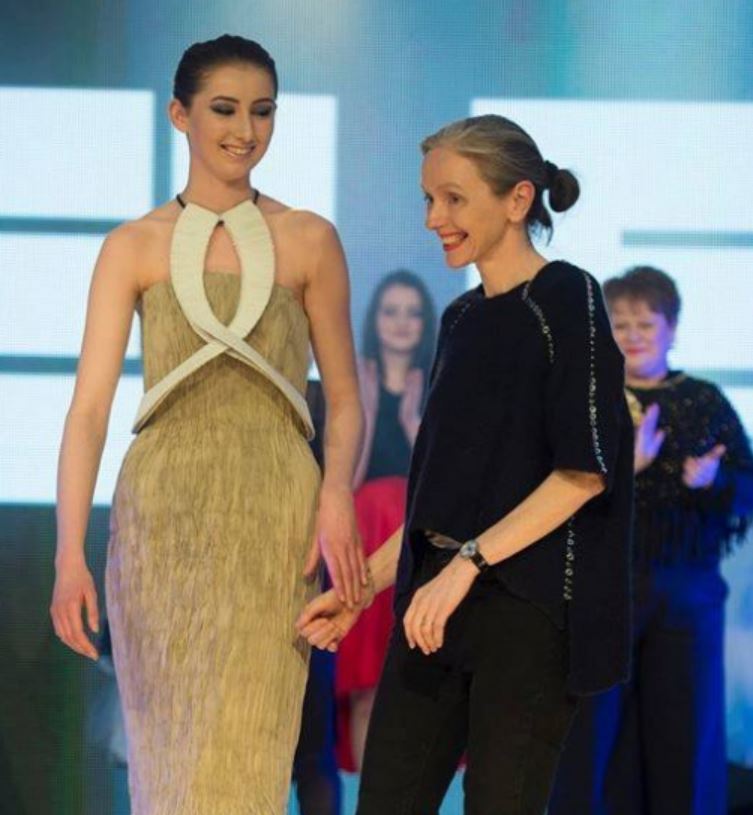
Shortly after she won the UCD Young Designer of The Year Award, which she says built up her confidence, especially as a mature student.
Her decision to go back and study fashion design came out of a desire to be literally more hands-on when it came to her creativity.
“Graphic design is wonderful, but it’s becoming more computer-based”, says Hayes. She adds that she wanted to do something with her hands.
“I just really wanted to get back and have something that was much more tactile. And everything I have been doing in fashion, the handcrafted elements, I really emphasise them”, says Hayes.
In addition to this, there is a history of needlework in her family as both her mother and grandmother were avid sewers and knitters.
When it comes to what influences her when creating her designs, her past experience proves useful. During her time as a graphic designer, she became interested in packaging. Hayes now tries to incorporate that three-dimensional quality into her pieces. Hayes does this by including material such as ribbon in her designs, which can be folded and manipulated in certain ways.
Hayes draws inspiration for her pieces from a range of different things such as stained glass windows and fortune-telling games she played as a child.
Unlike some of her colleagues in the industry, Hayes must have an idea first and choose the fabric second as she believes the fabric must suit the design.
Hayes is completely self-funded when it comes to creating her handcrafted pieces. During college, she worked as a graphic designer and was able to buy materials to put her pieces together herself. Hayes says that this does offer a sense of control, however it means that she cannot create great volumes of pieces.
“Like you really don’t make much at all at the start. All I can say is I’ve been taking baby steps”, she says.
Hayes does not compete with high-street prices as she wants to invest time and care into each piece she designs. Large quantities at smaller prices are less authentic designs, according to Hayes, who wants to create “timeless pieces.”
“If you spend 50 or 60 hours making a skirt, you can’t charge high street prices for it”, says Hayes.
Silvana Landa bags success for 2020
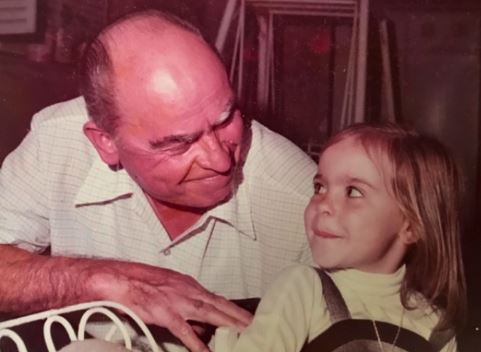
Silvana Landa, an Argentinian designer based in Dublin, was awarded one of just 14 places in the Emerging Global Brands event in Lille this year. Another Irish designer, Alanagh Clegg of Four Threads, won another spot.
This event, officially known as 48 Hours in Lille, accepted participants across 28 European countries and was organised by United Fashion and Maisons de Mode.
“We were chosen and we travelled for five days to Lille where we had conferences to attend, a very special showroom event where we met buyers from European stores who will hopefully stock my brand in the future, and our brands also participated in a super high-end fashion show alongside the other European designers”, says Landa.
“It was a total ‘pinch me’ moment to see my handbags on that special catwalk”, she continues.
Landa also expanded her brand this year to markets outside of Ireland. During her first meeting with the Council of Irish Fashion Designers (CIFD), the distributor for Australia and New Zealand met with her briefly. In her brand’s first year of life, it has evolved into an internationally recognised one.
“She saw my product that day and loved it, and I was one of the two first Irish brands to open in the New Zealand market. Super exciting”, says Landa.
“I love the idea that a woman in Auckland, New York, Buenos Aires or Tokyo is wearing a Landa handbag”, she continued.
Landa started her fashion career the opposite way to most of her colleagues as she is already exporting to New Zealand, Portugal and Lithuania but is now focusing on her more local market. Currently here in Ireland, her bags are only stocked in House of Ireland. However, she is planning to speak to some selected retailers in Ireland for 2020.
“I want women and girls out there to have a handbag they love, they are proud of, that shouts quality, and is also practical and beautiful.”
Silvana Landa
As well as market expansion and attending 48 Hours in Lille, Landa is also updating her online presence in 2020. Landa launched her brand and in October 2018. However, since then her website and the e-commerce side of her business has been neglected, she admits.
“I felt the website needed to work harder for me, to bring more qualified leads and traffic”, she explains. Her new and improved website was launched recently.
Landa’s bags are made from real leather sourced in Spain and Italy. The bags are then produced in a small factory. Landa also values sustainability in her business and does not include plastic when shipping, delivering or packaging her pieces bought online.
“We also use the leather cut-offs to create some small leather goods to reduce waste to the maximum”, she adds.
Leather was a natural fit for what material she would base her designs around, as her grandfather was an Italian cobbler and she grew up watching him work with this raw material.
The inspiration for her pieces comes from the women she meets while travelling the world.
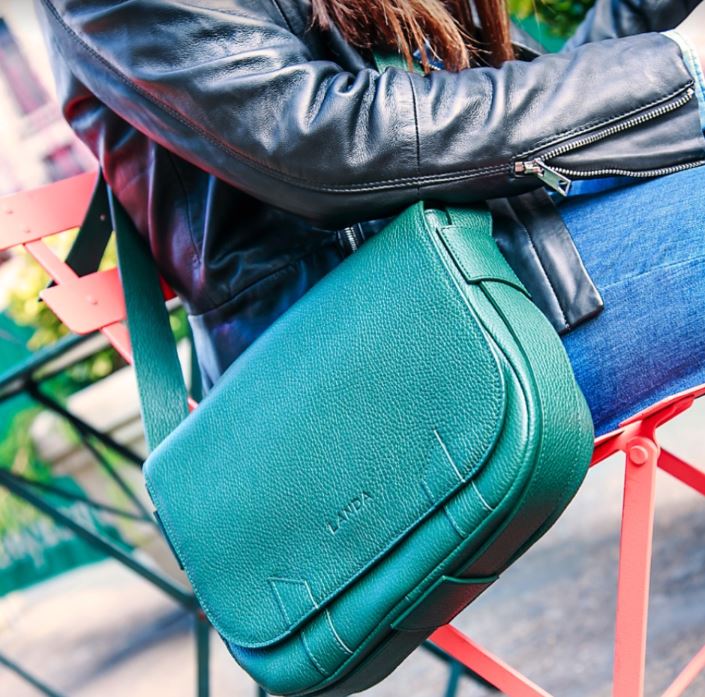
“I’m a mum, I’m a friend, I have to do supermarket shops, carry toys for my kids, go on date nights with my husband, go for walks with the dog. Most women have a similar life. I draw inspiration from busy, active women that juggle a million things at the same time. The superheroes of today”, she says.
“I want women and girls out there to have a handbag they love, they are proud of, that shouts quality, and is also practical and beautiful”, says Landa about what fuels her creative decisions.
Landa has a background in business, which makes sense given her success thus far with her brand. Her previous work experience includes working in commercial, strategy and marketing departments for big multinationals like L’Oréal and Luxury Division in Paris and Ireland.
“I launched new brands into Ireland (Kiehl’s and Biotherm). Then I opened the European market for Max Benjamin (Irish luxury home fragrance makers). I decided it was time to launch my own brand having worked for so many brands and watch them from being created all the way to the final consumer”, she told The Currency.
Landa, who was born in Argentina, moved to Ireland 18 years ago as she wanted to improve her English. She stated that she fell in love with the country after just one month with her host family.
“Then I married an Irishman and you guessed it. Never left. He can barbecue, though”, says Landa.
Landa continues to fund her fashion house herself along with the company’s co-founder, who is also her husband. At the early stages, she got financial support from the Local Enterprise Office and is currently in talks with investors for next year.
“The brand is at a turning point and we really want to scale up. In order to achieve this big jump, we will need to get some funding”, says Landa.
To increase their appeal to investors, they are working on various changes for 2020, such as a new collection (autumn/winter 2020), continually updating the website and social media platforms, changing the branding and communication and working on a stronger marketing plan.
“Many investors in Ireland are used to funding tech companies, and they totally overlook high-end products. Hopefully this will change”, says Landa.
Landa describes her designs as simple in aesthetic, feminine, practical and beautiful with also an attention to detail. Her best-selling design to date is her crossbody bag.
“It has such a perfect size to fit so many things and it still looks so compact. It also features a thick strap which makes it super comfortable to carry”, she says.
After just 14 months’ trading Landa already has a mix of Irish customers (B2C online) and international ones (online and stores).
Stacey Wall talks taxidermy and Peroni
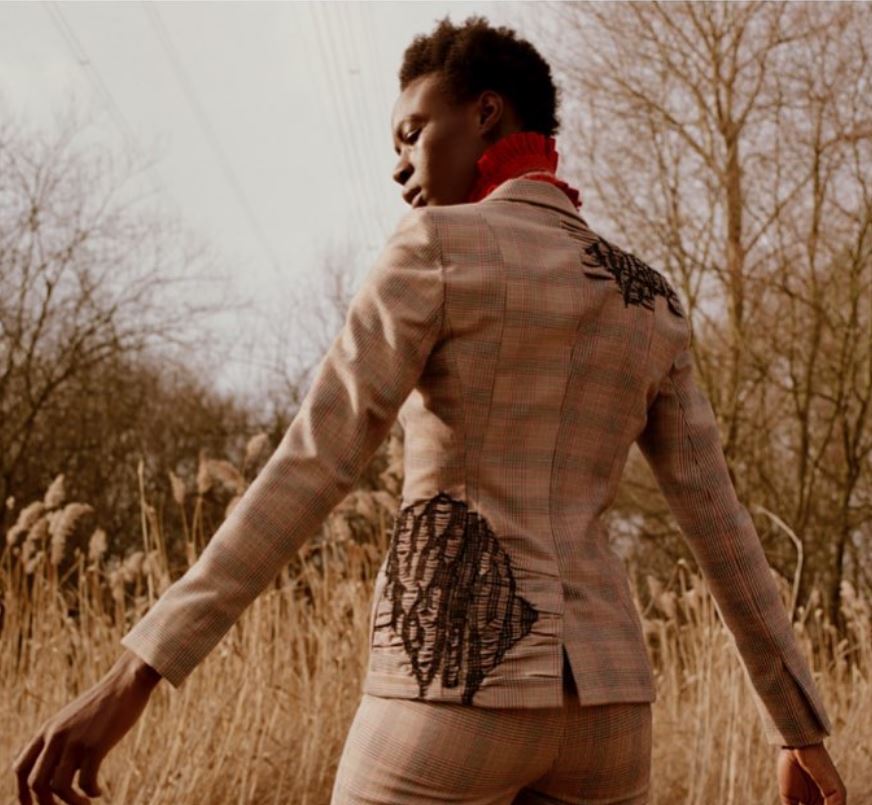
Stacey Wall continues to rise in the fashion world and is currently working on her new sustainable collection, to be launched in 2020.
For this collection, Wall is trying to repurpose old clothes and mix them with her textiles. For example, cutting up old Nike leggings and mixing them up with textiles, old trench coats and jeans.
“I quite enjoy it, because it allows you to use waste fabrics and repurpose things. So I was still continuing with that technique throughout the collection and seeing how far I could push it and use it differently”, says Wall about what people can expect in her new collection
“I don’t think it’ll be ready for the next fashion week. I kind of just want to get the collection together. And trying to do things sustainably is taking that bit longer”, says Wall.
The Irishwoman, who is based in the UK, had an unusual start in the fashion industry. She completed a two-year fashion portfolio course in Limerick College of Further Education 12 years ago. Through this institution’s partnership with the UK’s University for the Creative Arts, she did a year of womenswear there but left because it wasn’t for her. She saw the course as preparing its students for the high street, which is not the path she wanted to go with her designs.
“It was quite trendy at the time. I used to make sculptures and have them in exhibitions and stuff. It was all quite morbid.”
Stacey Wall
At this stage, it was too late for her to apply to Saint Martins. For her, the logical thing to do next was to get into taxidermy. Like Helen Hayes, Wall says she prefers working with her hands and this is one of the reasons she was attracted to taxidermy.
“The raw material you’re using is quite precious. It’s skin and there’s only one of it and it’s kind of quite rare in that sense”, she says.
“I wanted something to do that was creative while waiting to apply. And then I did that for a few years on the side. Then applied to Saint Martins, got in and went there for four years”, she says.
Taxidermy does make sense as a temporary plan B for Wall as she uses textiles often and emphasises the importance of sustainability when creating her designs.
“You’re using what you have”, says Wall. Which is true both of taxidermy and sustainable fashion.
“It was quite trendy at the time. I used to make sculptures and have them in exhibitions and stuff. It was all quite morbid”, she says about her time in taxidermy.
Then, she began Saint Martins, which provided a space to make a lot of connections. There, Wall created her trademark knitting technique. From then on people started requesting her work. Once she finished Saint Martins, she applied for the House of Peroni sponsorship. She was successful and started setting up her label.
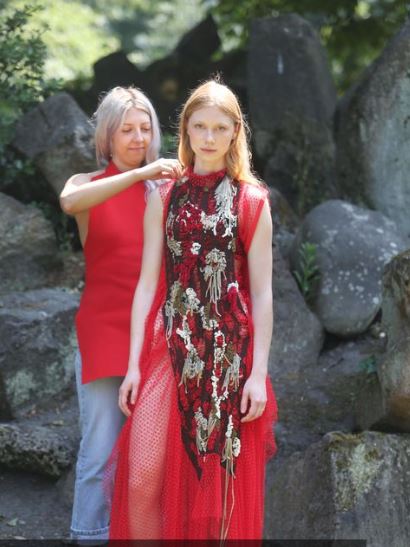
Wall received mentorship at House of Peroni from people such as fashion critic Alexander Fury, but she also seeks out guidance from others when designing her pieces. For her final collection, she went to Dublin and met with stylist and fashion consultant Aisling Farinella. She completed her most recent collection with Peroni and says she saw it as a continuation of her previous collection there.
“Research is as important as the design for me. That’s kind of drilled into you at Saint Martins. I wouldn’t just blindly go into it”, says Wall.
Wall’s designs have even reached other parts of Europe as one of her designs was seen on a model in German Vogue.
“I’m working on things at the moment but I don’t have sponsorship, so I’m just taking it slowly”, says Wall about plans for her label in 2020.
For Wall, like Silvana Landa, the materials are at the core of her designs and she always starts with her textiles and things that are re-purposed.
“Anything that can get donated or waste fabrics that I have at home” are what she uses to create her pieces. In terms of ideas, Wall often looks to her home country for inspiration.
“All the folk things like the Strawboys and Wren Boys and all that. I find all that really interesting,” says Wall who often looks to her friends who perpetuate these traditions in the west of Ireland.
Wall, like her other designers, is mainly self-funded and has worked in furniture restoration and upholstery since college, and created her collection on the side.
Being more sustainably conscious when creating her pieces actually works out cheaper for Wall, as most of her stuff is from discarded materials and less costly. Also, designing sustainable creations is often a criterion that must be met to receive funding in the UK fashion industry, according to Wall.
“I think for me anyway, it’s always been organic with my work. I’ve always been into it. The start point of my work is always sustainability. I hate waste”, says Wall. For her, it was always a core part of her brand before it became more of a trend with other designers.
“I kind of like the creative challenge of how you can re-purpose stuff”, she added.
Last year Wall met with Brown Thomas to talk about a possible future collaboration, however it did not work out.


